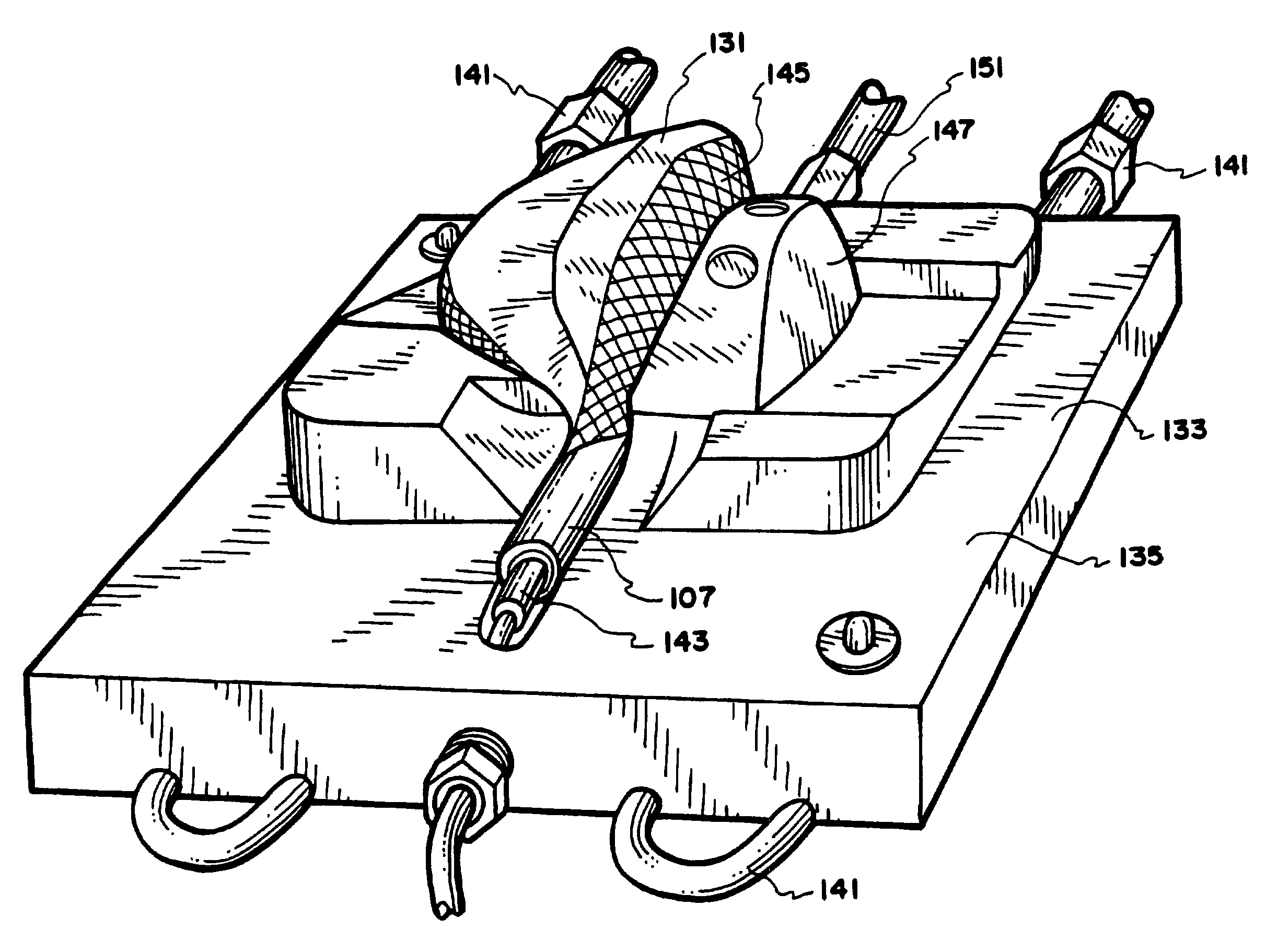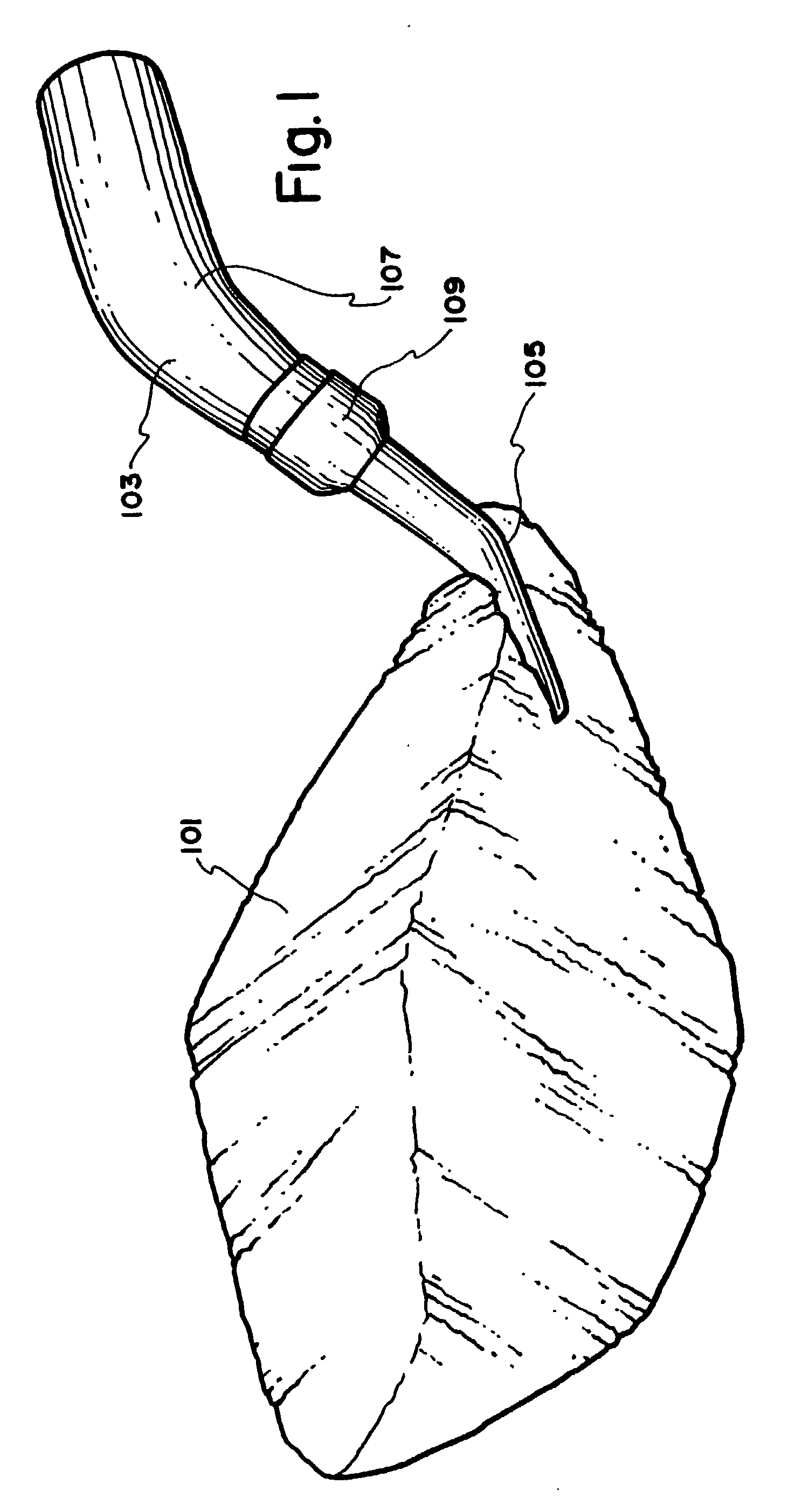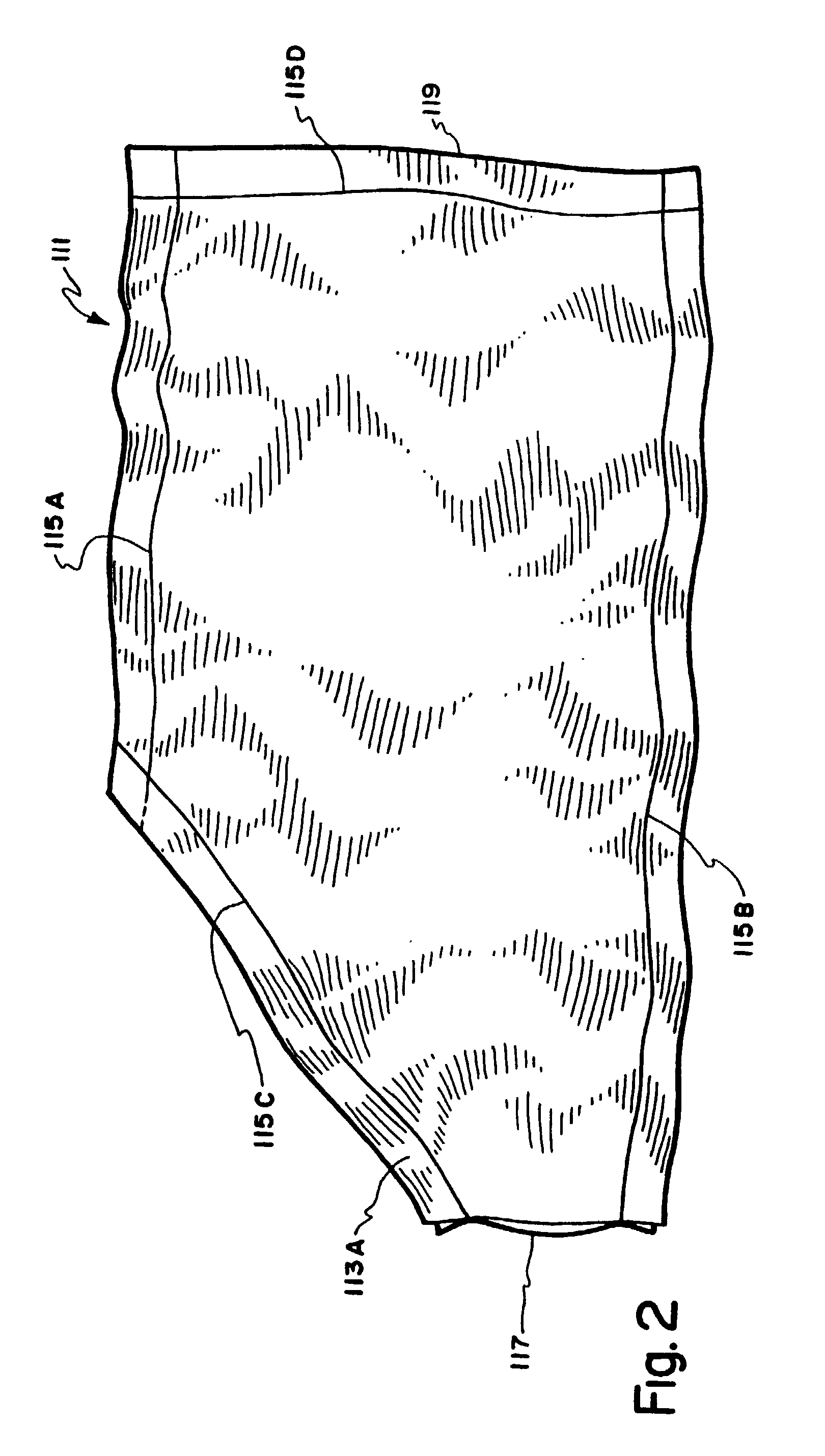Method of manufacturing a composite golf club head
a golf club and composite technology, applied in the field of manufacturing a composite golf club head, can solve the problems of difficult to dissolve, difficult to recover, and difficult to remove solvents, such as acids and organic liquids, and achieve the effects of strong heat resistance of the mandrel core, easy removal, and easy removal
- Summary
- Abstract
- Description
- Claims
- Application Information
AI Technical Summary
Benefits of technology
Problems solved by technology
Method used
Image
Examples
Embodiment Construction
[0068] As a specific example, referring to FIG. 1, which shows a foam core 101 with an incomplete inflation fitting 103 pushed into the foam core. The inflation fitting is also placed to function as a mandrel around which plies for the club head hosel are placed. The incomplete inflation fitting 103 comprises a copper tube 105 and silicon rubber tubular member 107 which is fixed to the copper tube with the inner self vulcanizing rubber tape 109A.
[0069] Referring to FIG. 2, a bladder 111 is formed by heat-sealing two plies of a heat sealable film with seals 115A, 115B, 115C. An opening 117 is provided for the inflation fitting, and an edge 119 (opposite the opening) is left unsealed until after insertion of the assembled inflation fitting and core, after which it is sealed with the final bladder seal 115D. FIG. 3 shows the core 101 with the completed inflation fitting 104 in the bladder 111 with the insertion edge 119 sealed. The bladder is sealed to the completed inflation fitting 1...
PUM
| Property | Measurement | Unit |
|---|---|---|
| weight | aaaaa | aaaaa |
| weight | aaaaa | aaaaa |
| weight | aaaaa | aaaaa |
Abstract
Description
Claims
Application Information
 Login to View More
Login to View More - R&D
- Intellectual Property
- Life Sciences
- Materials
- Tech Scout
- Unparalleled Data Quality
- Higher Quality Content
- 60% Fewer Hallucinations
Browse by: Latest US Patents, China's latest patents, Technical Efficacy Thesaurus, Application Domain, Technology Topic, Popular Technical Reports.
© 2025 PatSnap. All rights reserved.Legal|Privacy policy|Modern Slavery Act Transparency Statement|Sitemap|About US| Contact US: help@patsnap.com



